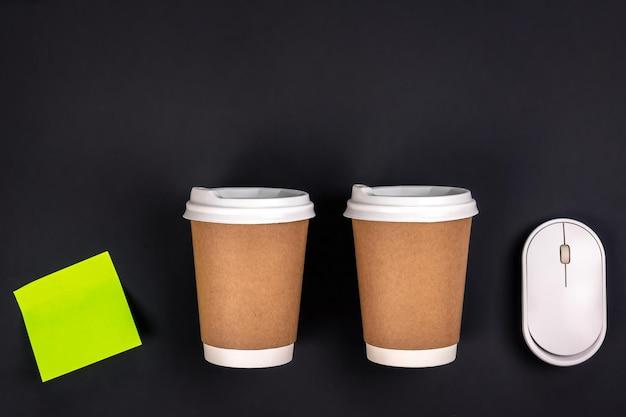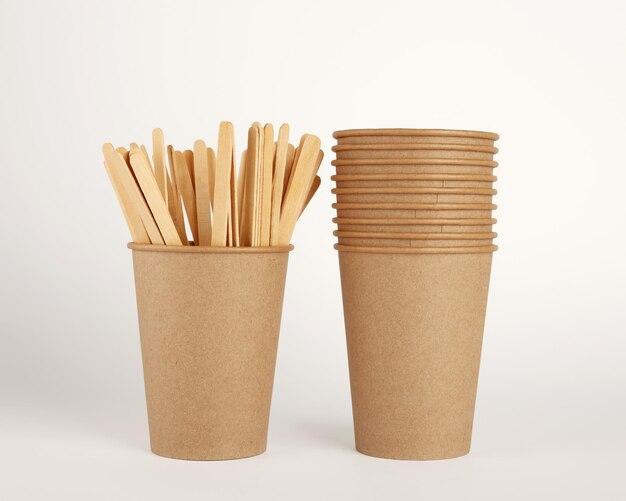Who doesn’t love immersing themselves in the fascinating world of resin art? Whether you’re a seasoned artist or just starting on your creative journey, resin can be a versatile medium to work with. However, in the midst of all the excitement, it’s important to know the do’s and don’ts of resin mixing.
One question that often arises is, “Can I use paper cups to mix resin?” This blog post is here to shed some light on the topic and provide you with all the necessary information. We’ll explore whether paper cups are a suitable option for mixing resin, the potential impact on the environment, and alternative options. So let’s dive in and discover the best practices for resin mixing while ensuring a seamless, successful resin art experience!
Can I Use Paper Cups to Mix Resin
If you’re a resin enthusiast like me, you’re always looking for ways to simplify the resin mixing process. One question that often comes up is, “Can I use paper cups to mix resin?” Well, let’s dive into this topic and uncover the truth behind using these humble drinking vessels for resin mixing purposes.
The Paper Cup Conundrum
When it comes to mixing resin, it’s essential to consider the materials you use. While paper cups may seem like a convenient option, they aren’t the best choice for this task. Why, you ask? Well, paper cups have a couple of drawbacks that may hinder your resin mixing experience.
The Soaking Situation
Resin has a certain chemical composition that can react with various substances. Unfortunately, paper cups are not immune to this. When exposed to resin, paper cups can absorb some of the liquid, leading to a messy situation. You wouldn’t want your resin mixture to go to waste due to cup absorption, right?
Leaking Woes
Another issue with using paper cups is their potential for leakage. Resin is a sticky substance that can easily seep through the tiny pores in paper cups, especially if you’re mixing large quantities. This leakage can not only cause a mess but also result in inaccurate resin ratios, affecting the quality of your final resin piece.
Safe Alternatives for Resin Mixing
While paper cups might not be ideal for mixing resin, fear not, my resin-loving friend! There are several fantastic alternatives that work like a charm without any limitations.
Plastic Mixing Cups
One of the most popular options for resin mixing is plastic measuring cups. These cups are made to withstand the chemical properties of resin, ensuring a smooth and mess-free mixing experience. Plus, they often come with precise markings, making it easier to measure resin and hardener ratios accurately.
Silicone Mixing Cups
If you’re passionate about eco-friendly options, silicone mixing cups are a fantastic choice. These cups not only resist resin absorption but also provide flexibility, making it easier to pour every last drop of your resin mixture.
Graduated Mixing Cups
For those who want to take their resin mixing game to the next level, graduated mixing cups are a game-changer. These cups have measurement markings, allowing you to achieve precise resin-to-hardener ratios effortlessly. With graduated mixing cups, you’ll be able to mix resin like a pro in no time!
While paper cups may have their time and place in our lives, they aren’t the best option for mixing resin. We’ve explored the conundrum surrounding this topic and discovered that paper cups can lead to soaking and leaking issues, potentially ruining your resin masterpiece. Thankfully, there are safer and more reliable alternatives like plastic, silicone, and graduated mixing cups that will elevate your resin mixing experience to new heights.
Next time you’re ready to embark on a resin-filled adventure, leave those paper cups aside and opt for a cup that can withstand the magic of resin. Happy resin mixing, my fellow creators!
FAQ: Can I Use Paper Cups to Mix Resin
Welcome to our comprehensive FAQ section on using paper cups to mix resin! Whether you’re a beginner or an experienced resin artist, we’ve got the answers to all your burning questions. So grab your favorite beverage, sit back, and let’s dive right in!
Can I reuse my resin mixing cups
In most cases, it’s not recommended to reuse your resin mixing cups, especially if they’re made of paper. Resin has a tendency to stick to surfaces, and trying to scrape it off can introduce contaminants that might affect your future resin projects. So, to ensure the best results, it’s best to use fresh cups each time you mix resin.
Does resin melt foam
Yes, resin can melt foam! So, if you’re thinking of using foam cups or any foam-based materials to mix your resin, think again. Resin generates heat as it cures, and this heat can cause foam to melt or distort. Stick with materials like plastic or silicone, which are resistant to resin’s curing properties.
Can you save mixed resin
Unfortunately, resin doesn’t have a great shelf life once it’s mixed. The chemical reaction between the resin and hardener starts immediately, and saving it for later use will only lead to disappointing results. It’s best to mix only the amount of resin you need for your project and avoid the temptation to save the leftovers.
What happens if resin gets too hot
Resin can get hot during the curing process, especially if it’s mixed in bulk or in a confined space. If resin gets too hot, it can become discolored, emit strong odors, or even crack. To prevent this, ensure proper ventilation and consider using a larger mixing container to distribute heat effectively.
Does tacky epoxy ever cure
Yes, tacky epoxy can cure, but it might need a little help. If you find that your epoxy resin is still tacky even after the curing time has passed, you can try a few things. You can expose it to UV light, heat it gently with a heat gun, or recoat it with a fresh layer of resin. Sometimes all it needs is a little extra TLC to fully cure and become beautifully glossy.
Why is my resin still sticky
If your resin is still sticky after curing, it could be due to a few factors. The most common reasons are incorrect resin-to-hardener ratios, insufficient mixing, or not allowing enough curing time. Double-check your measurements, mix the components thoroughly, and ensure you’re giving it ample time to cure for that perfect, non-sticky finish.
What is best to mix resin in
When it comes to mixing resin, the best containers are those made of plastic or silicone. These materials are non-reactive and won’t contaminate your resin. Plus, their smooth surfaces make it easier to mix your resin thoroughly without any pesky residue sticking to the sides.
Why did my resin melt my cup
Uh-oh, it seems like your resin got a bit too hot for the cup to handle! Resin generates heat as it cures, and if the curing process is exothermic, it can melt plastic cups. To avoid this, opt for heat-resistant containers or keep the resin in bulk quantities to prevent excessive heat buildup.
What is the mixing ratio for resin and hardener
The mixing ratio for resin and hardener depends on the specific brand and type of resin you’re using. Most resin kits will provide clear instructions on the correct proportions. Typically, it’s a 1:1 ratio, meaning equal parts resin and hardener by volume or weight. Always follow the manufacturer’s guidelines for the best results.
Can I do resin in my room
Yes, you can do resin in your room, but proceed with caution! Resin can release fumes during the curing process, which might not be ideal for an enclosed space. Make sure to work in a well-ventilated area or invest in a fume extractor or mask to protect your lungs. Better safe than sorry!
What’s the difference between casting and coating resin
Casting resin and coating resin are two different types of resin with distinct properties. Casting resin is designed specifically for creating larger, solid objects like jewelry, figurines, or paperweights. On the other hand, coating resin is formulated to provide a clear, glossy finish when used in thin layers to coat surfaces such as artwork, tabletops, or countertops. So, choose the right type of resin based on your project goals.
What happens if you put too much hardener in resin
Putting too much hardener in resin can lead to a variety of unsightly issues. It can cause the resin to cure too quickly, resulting in a hazy or yellowed appearance. The excess hardener can also weaken the overall strength of the cured resin, making it more prone to cracks and deformations. So, always measure carefully and stick to the recommended ratios.
Can you mix resin in a glass cup
Yes, you can mix resin in a glass cup, but be mindful of a few things. Glass can retain heat, which could affect the curing process. Additionally, resin can create a strong bond with glass, making it difficult to remove the cured mixture. If you choose to mix resin in a glass cup, consider using a release agent like petroleum jelly on the walls to aid in easy removal.
Can I use a measuring cup for resin
Using a measuring cup for resin is a great idea! Just make sure it’s a dedicated measuring cup solely for your resin projects. Resin can be difficult to clean off completely, so having a separate measuring cup ensures accurate measurements and avoids any risk of unwanted residues affecting future resin mixes.
Does resin eat through plastic
Resin is generally safe to use in plastic containers, but it’s important to choose the right type of plastic. Some plastics are more resistant to resin’s chemical properties than others. Look for containers labeled as “resin-safe” or made from high-density polyethylene (HDPE) or polypropylene (PP) to ensure that your plastic cup won’t be devoured by the resin.
Can I mix epoxy resin in a plastic cup
Absolutely! Plastic cups are commonly used for mixing epoxy resin. Just be sure to use cups made from resin-safe plastics like HDPE or PP, which are resistant to the chemicals in epoxy resin. These cups provide a convenient, disposable option for measuring and mixing your epoxy resin with ease.
Why did my epoxy resin get hot
Epoxy resin generates heat as it cures, and during this exothermic process, the temperature can rise significantly. It’s crucial to mix epoxy resin in smaller batches or use larger containers that can dissipate heat effectively. Otherwise, the heat buildup can cause discoloration, distortion, or even cracking in extreme cases. Keep an eye on your epoxy’s temperature to ensure a smooth curing process.
Can you use Styrofoam cups to mix resin
Unfortunately, Styrofoam cups are not suitable for mixing resin. Resin can melt Styrofoam due to its exothermic curing process. It’s best to stick with materials like plastic or silicone that are resistant to heat and won’t crumble or introduce impurities into your resin.
How can you tell if resin is mixed
To ensure your resin is thoroughly mixed, look for two key indicators: clarity and consistency. Stir the resin and hardener together for the recommended mixing time, making sure to scrape the sides and bottom of the container. The mixture should become clear and free from streaks or swirls. Additionally, the consistency should be even, without any lumps or clumps. Once you achieve these two things, you’re good to go!
And there you have it, folks! A comprehensive FAQ section that’s sure to clear up any uncertainties you had about using paper cups to mix resin. Now go forth, create stunning resin masterpieces, and remember to mix responsibly!

